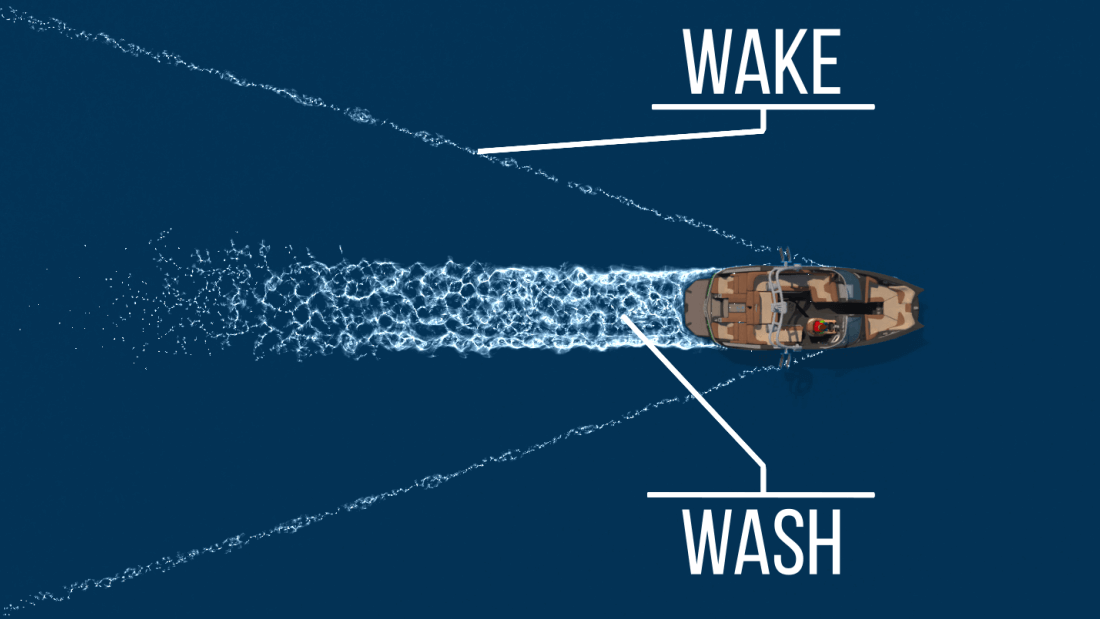What is wake & wash when boating?
Wake and wash are two terms that are often used to describe the waves created by a boat as it moves through the water.

Wake
The wake is the series of waves that trail behind a boat as it moves through the water. The size and shape of the wake can vary depending on the size and speed of the boat, as well as the shape of the hull and other factors. In general, larger and faster boats create larger wakes that can be challenging for other boats, swimmers, or shorelines to navigate.
Wash
The wash is the turbulent water that is created by the boat's propeller as it moves through the water. The size and shape of the wash can also vary depending on the boat and other factors. The wash can be especially challenging for swimmers or small boats, as it can create a strong current that can be difficult to swim against or navigate.
Both wake and wash can be potentially dangerous, especially in crowded or narrow waterways. It is important for boaters to be aware of the impact of their wake and wash on other boaters, swimmers, and shorelines, and to take steps to minimize their impact. This can include slowing down, avoiding crowded areas, or adjusting course to minimize the size and impact of the wake and wash.
When operating a powerboat, understanding and controlling your wake is one of the most important responsibilities you have as a boater. A wake is the wave pattern created behind your boat as it moves through the water. Large or careless wakes can damage shorelines, erode docks, swamp smaller boats, and create hazards for swimmers, paddlers, and other boaters.
To control your wake, always be aware of your speed, boat trim, and surroundings. At high speeds, your boat rides on top of the water (planing) and produces a smaller wake. At slower speeds, especially just before planing, your boat pushes more water aside, creating a larger, more destructive wake. For this reason, avoid traveling at half-throttle in narrow channels or near docks — either idle slowly at “no wake” speed or move to open water before accelerating.
Trim your motor properly to help minimize wake size and maintain smoother control. A properly trimmed boat stays balanced, reducing drag and the size of waves produced. In shallow or congested areas, keep the boat level and move at a steady, low speed to avoid disturbing others.
Always follow posted “No Wake” or “Slow Speed” zones. These areas exist to protect property and wildlife and to ensure safe navigation. Ignoring these zones is not only inconsiderate but often illegal, carrying fines or penalties.
Finally, show good boating etiquette. When passing another vessel, reduce speed and angle your wake away. Avoid making repeated high-speed passes near shorelines or other boats. By learning how to control your wake, you demonstrate respect for the water, protect the environment, and contribute to a safer and more enjoyable boating experience for everyone.